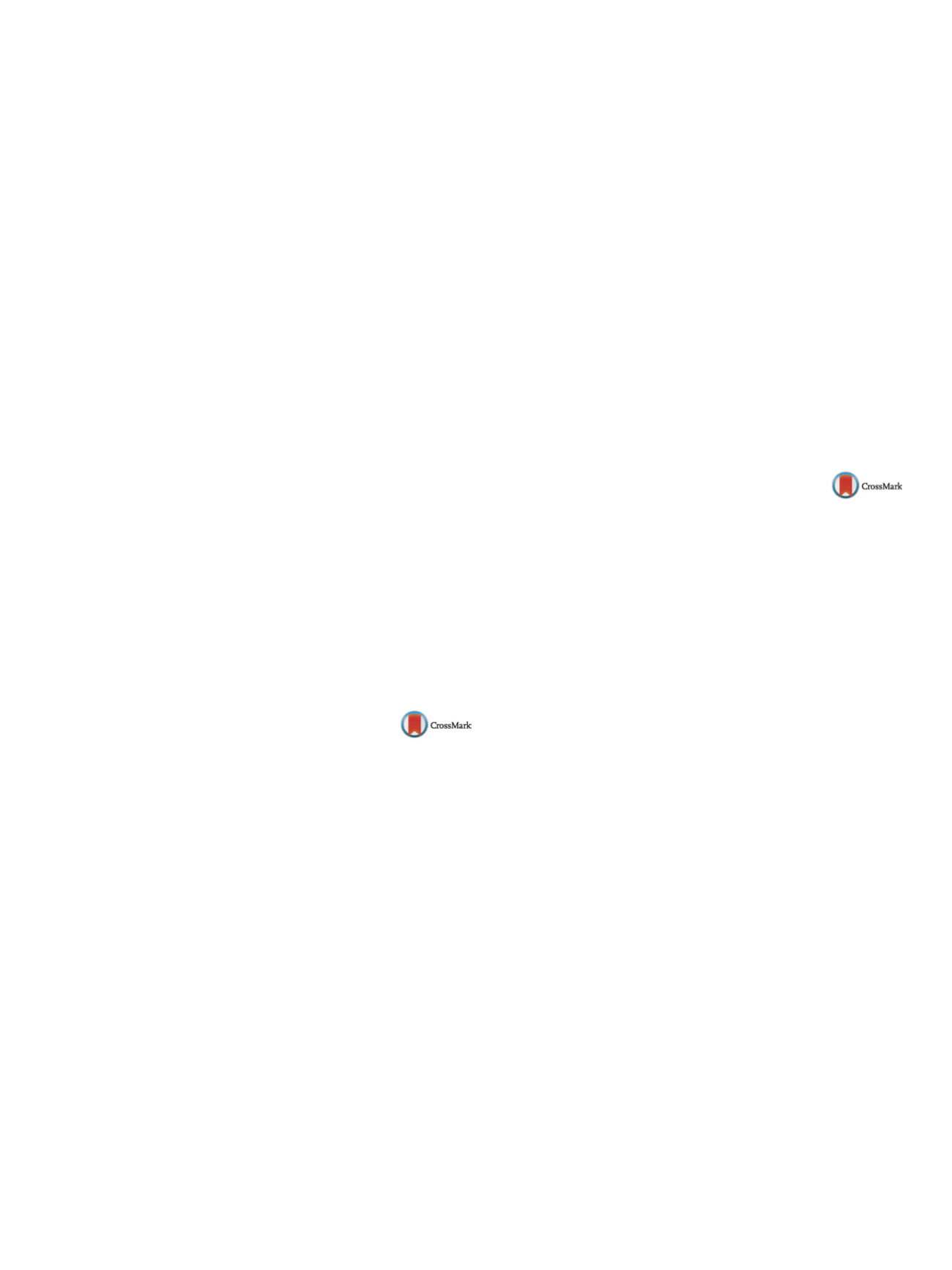

25th European Congress of Psychiatry / European Psychiatry 41S (2017) S170–S237
S227
Introduction
Recent findings demonstrated significant overlaps
among major psychiatric disorders on multiple neurocognitive
domains. However, it is not clear which are the cognitive functions
that contribute to this phenomenon.
Objectives
To find the optimal clustering solution using the two-
step cluster analysis on a sample of psychiatric patients.
Aims
To classify into subgroups a cross-diagnostic sample
of psychiatric inpatients on the basis of their neurocognitive
profiles.
Methods
Seventy-one patients with psychotic, bipolar, depres-
sive and personality disorders hospitalised at Psychiatric Diagnosis
and Care Service of Bufalini Hospital of Cesena participated in
the study. The symptomatology was assessed using Health of the
Nation Outcome Scales-Roma and Brief Psychiatric Rating Scale.
Cognitive functions were evaluated using Tower of London, Mod-
ified Wisconsin Card Sorting Test, Judgment and Verbal Abstract
Tasks test, Raven matrices, Attentional Matrices, Stroop Test and
Mini Mental State Examination. Two-step cluster analysis was
conducted using the standardized scores of each neurocognitive
test.
Results
Two groupswere obtained:– group 1, with good cognitive
performances;– group 2, with almost all subjects having impaired
cognitive performances.
Executive functions and attention are themajor determinants of the
cluster solution. The clusters did not differ on socio-demographic
correlates. Different diagnoses were equally distributed amongst
the clusters.
Conclusions
Two-step cluster analysis was useful in identify-
ing subgroups of psychiatric inpatients with different cognitive
functioning, overcoming other cluster techniques limitations.
According to former literature, these results confirm a continuum
of severity in cognitive impairment across different psychiatric dis-
orders.
Disclosure of interest
The authors have not supplied their decla-
ration of competing interest.
http://dx.doi.org/10.1016/j.eurpsy.2017.01.2226EW0357
ICD-11 psychotic disorders:
Preliminary results of the
case-controlled studies and the
Russian opinion
M. Kulygina
1 ,∗
, V. Krasnov
2, P. Ponisovskiy
3, J. Keeley
4, G. Reed
51
Department of Informatics and system research in psychiatry,
Moscow Research Institute of Psychiatry MoH RF, Moscow, Russia
2
Department of affective spectrum disorders, Moscow Research
Institute of Psychiatry MoH RF, Moscow, Russia
3
Department of mental disorders – complicated by substance abuse,
Moscow Research Institute of Psychiatry MoH RF, Moscow, Russia
4
Department of psychology, Virginia Commonwealth University,
Richmond, USA
5
Department of mental health and substance abuse, World Health
Orgainzation, Geneva, Switzerland
∗
Corresponding author.
Introduction
One of the WHO’s innovations for improving the
ICD-11 chapter Mental and Behavioral Disorders was the creation
of the Global Clinical Practice Network (GCPN), an international
network of more than 12,000 mental health and primary care pro-
fessionals from 144 countries.
Aims and objectives
In order to evaluate perceived clinical util-
ity of the ICD-11 guidelines, the case
-
controlled field studies that
involved the application of the proposed diagnostic guidelines to
standardized case material were implemented via the Internet in
different languages.
Method
Two hundred and seventy-eight Russian mental health
care professionals, the GCPN members, have participated in case
controlled Internet study for the chapter “Schizophrenia and
Other Primary Psychotic Disorders”. Russian participants were
represented by psychiatrists mostly (89%) and much less by psy-
chologists (8%) which corresponds with the general situation in the
Russian mental health care system.
Results
Russian clinicians have used the proposed ICD-11 diag-
nostic guidelines successfully to assess delusional disorder as well
as schizophrenia. But there were certain categories (schizoaffec-
tive disorder, subthreshold delusions) with which the participants
seemed to struggle. The critical comments were focused on
opposing so called syndrome-based assessment and nosological
diagnostics. Most concerns were about elimination of Schizophre-
nia subtypes.
Conclusion
Russian mental health care professionals proved to
be interested in ICD revision process and demonstrated their
special diagnostics opinion based on rich clinical traditions and
psychopathological approach. In order to use ICD-11 guidelines in
clinical practice more efficiently supplementary appropriate train-
ing would be needed.
Disclosure of interest
The authors have not supplied their decla-
ration of competing interest.
http://dx.doi.org/10.1016/j.eurpsy.2017.01.2227EW0358
Exploring maternal mental health in
Syrian refugee women
A. Bowen
1 ,∗
, A. Ahmed
2, C. Feng
21
Nursing, University of Saskatchewan, Saskatoon, Canada
2
School of Public Health, University of Saskatchewan, Saskatoon,
Canada
∗
Corresponding author.
Introduction
There has been a rapid influx of 30,000 Syrian
refugees in Canada, many are women of childbearing age, andmost
have young children. The literature reports that refugee women
are almost 5 times more likely to develop postpartum depres-
sion than Canadian-born women. However, little is known about
the experiences that the Syrian refugee women have encoun-
tered pre- and post-resettlement and their perceptions of mental
health issues in general, and of maternal depression in particular.
Thus, there is an urgent need to understand the refugee women’s
experiences of having a baby in Canada from a mental health
perspective.
Methods
Participants include Syrian refugee women who
migrated to Saskatoon Canada in 2015–16 and who were either
pregnant or up to one year postpartum. Qualitative data was
collected via a focus group with thematic analysis, while depres-
sion with Edinburgh Postnatal Depression Scale (EPDS) and PTSD
screening and sociodemographic descriptive data were collected
from a structured questionnaire to provide context for the qualita-
tive analysis.
Results
Twelve women participated in the focus group, despite
smiling often, 58% of them screened as probable depression
(EPDS > 10), 25% screened positive for depression (> 12 on EPDS),
and 17% screened positive for PTSD. None of the women indicated
intimate partner violence or suicidal thoughts. All participants indi-
cated social support, mostly partner, and 25% had a history of
depression. Thematic analysis will be shared.
Conclusions
Perinatal Depression is a serious problem for refugee
women that deserve more in-depth study to ensure optimal out-
comes and to develop services and programs.
Disclosure of interest
The authors have not supplied their decla-
ration of competing interest.
http://dx.doi.org/10.1016/j.eurpsy.2017.01.2228

















